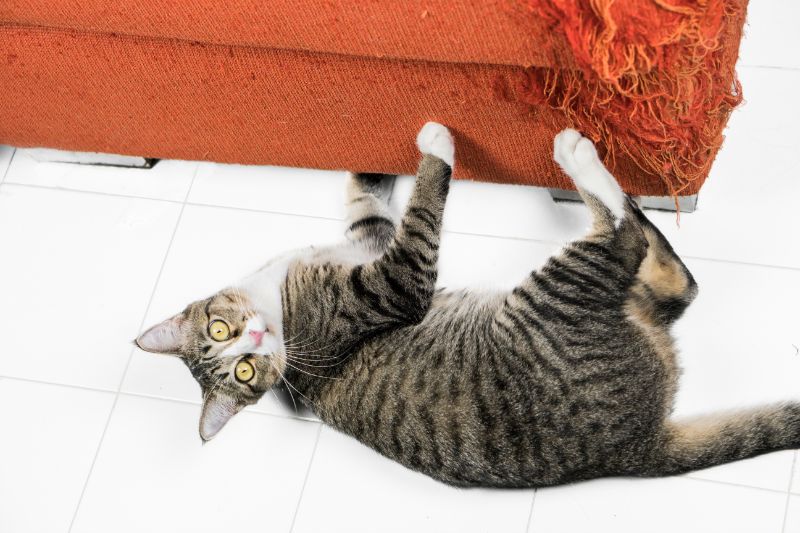Kitty Like to Claw? How You Can Deter Destructive Cat Scratching Behavior

Whether you have a vintage velvet sofa, or a worn out hand me down for a couch, you don’t want your furniture to become victims of your cat’s claws.
They aren’t trying to make you mad, but cats must answer to their instincts. Despite the fact that most people find it irksome, cat scratching is just one of those feline behaviors that serves many needs. Luckily, there are ways you can prevent it from becoming a habit.
Why They Do It
Cat scratching has several functions. Aside from loosening up and removing old layers of skin surrounding the claws, it stretches out their backs, front legs, and feet. In other words, it feels good.
Equally important is the fact that cats can mark their territory through scent glands in their feet. So, when they scratch something, they are likely doing so deliberately in order to say “mine”. It looks like it and, to other animals, smells like it, too.
Should I Stop It?
Cat scratching is a normal feline behavior, a mechanism that they need and benefit from. In this regard, it may seem unkind to want scratching to stop. The goal then becomes creating opportunities for them to scratch appropriate items, and not your furniture or curtains. Indeed, cat scratching on your household items can only truly be deterred if alternatives are provided.
A Proper Cat Scratching Post
Cats are naturally drawn to scratching posts. They typically know what it is and what to do with it. That being said, however, you may have to slowly guide your cat to their post and demonstrate what to do. Please never force your cat to use the post; they have to get used to it on their own terms.
The Right Materials
Most commercial cat scratching posts are covered in sisal rope or carpeting. They love to sink their claws into a highly textured surface, so be sure that their post is either coarse or nubby.
Depending on your cat’s preferences, you may see that they like a vertical post that really stretches their back or a horizontal surface that offers an opportunity to stick the rear in the air.
You can offer them treats to entice them closer to the post, or give them out after they use it. Spray the post with a catnip spray or sprinkle dried catnip on the post. Either way, work toward creating a positive association.
Discouraging Them
A double-pronged approach to redirect cat scratching may involve discouraging them to use certain surfaces. Cover areas that they seem to prefer with double-sided sticky tape, sand paper, aluminum foil, or spray surfaces with citrus products.
Another good strategy is to trim their claws on a weekly basis. Reward them during this process and give lots of affection.
What to Avoid
Since cat scratching answers specific feline needs, it is important that they always have the opportunity to do so. Scolding or punishing your cat should always be avoided.
Once they have adopted their scratching post and use it regularly, do not dispose of it when it appears ratty or beyond benefit. Chances are, your cat is very attached to their post, and may not easily use a new one (or they may lash out and start using your furniture again!).
Love Your Cat
Cats are brilliant animals so you’ll likely see progress in a short time. If you have further questions about cat scratching behavior, or need help deterring it, we’re always here for you at Rocklin Ranch Veterinary Hospital.

